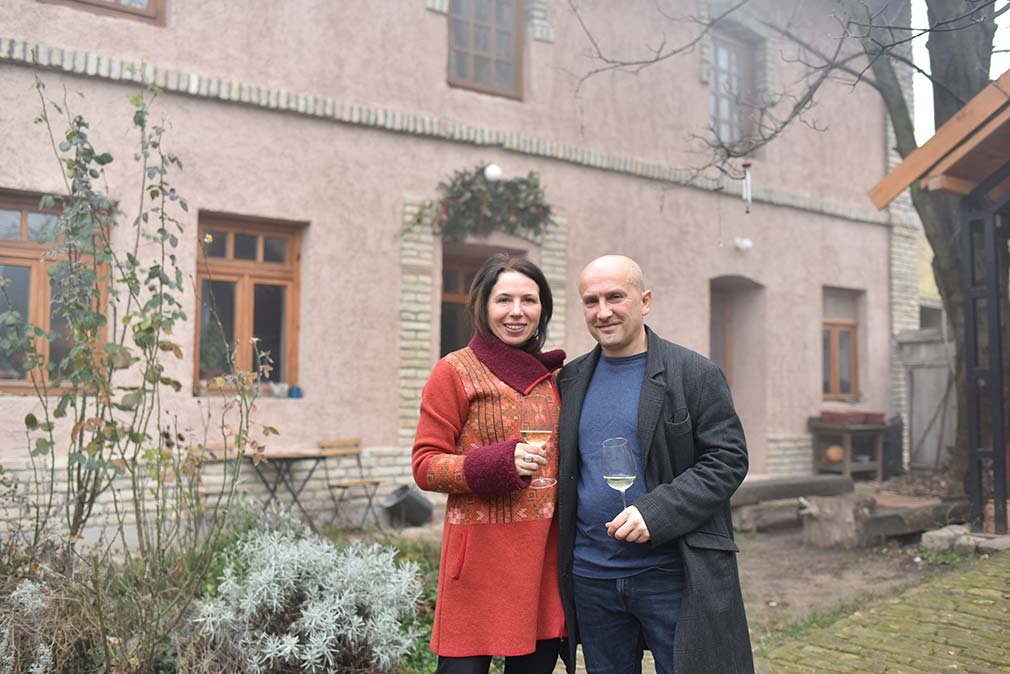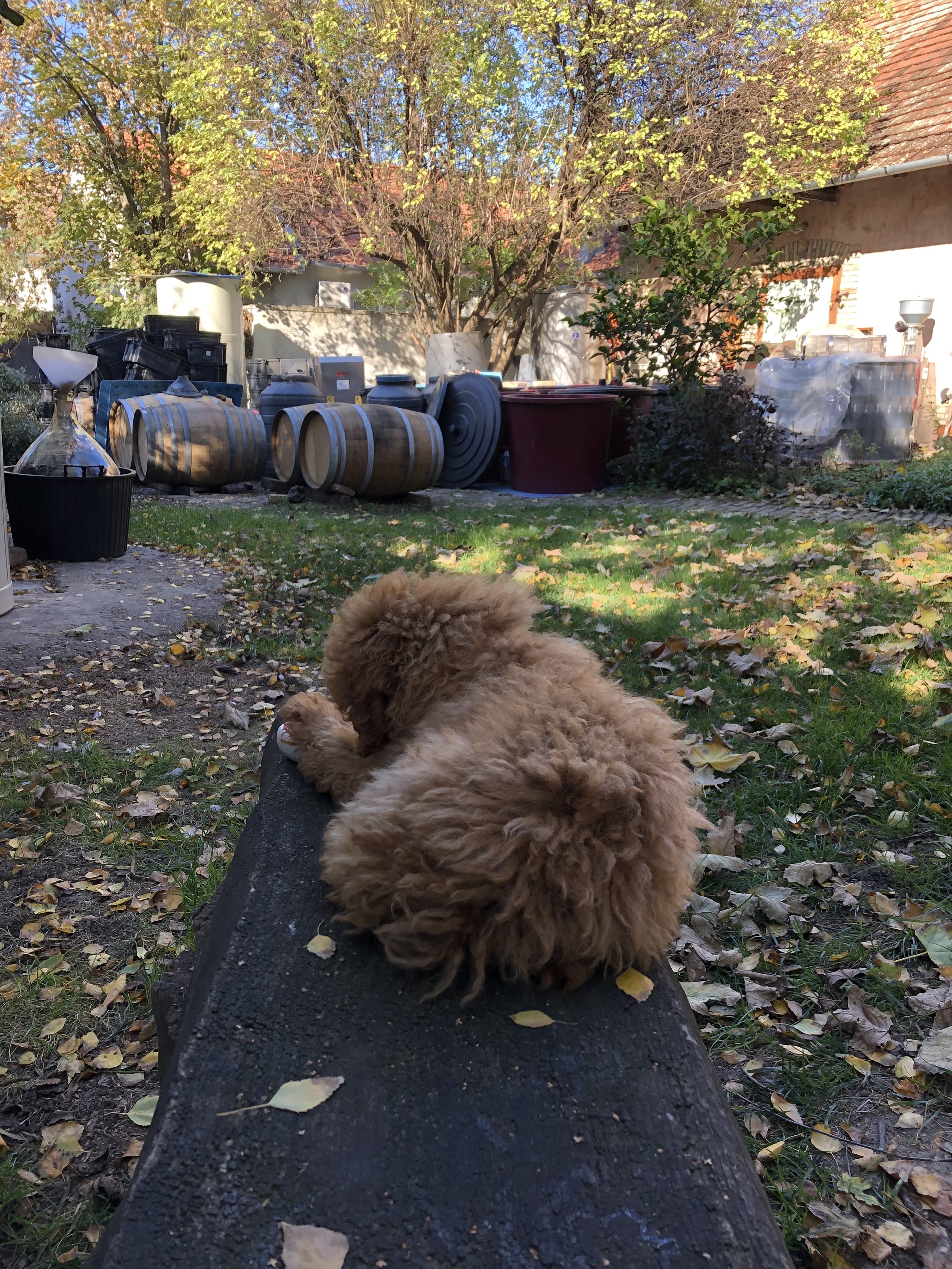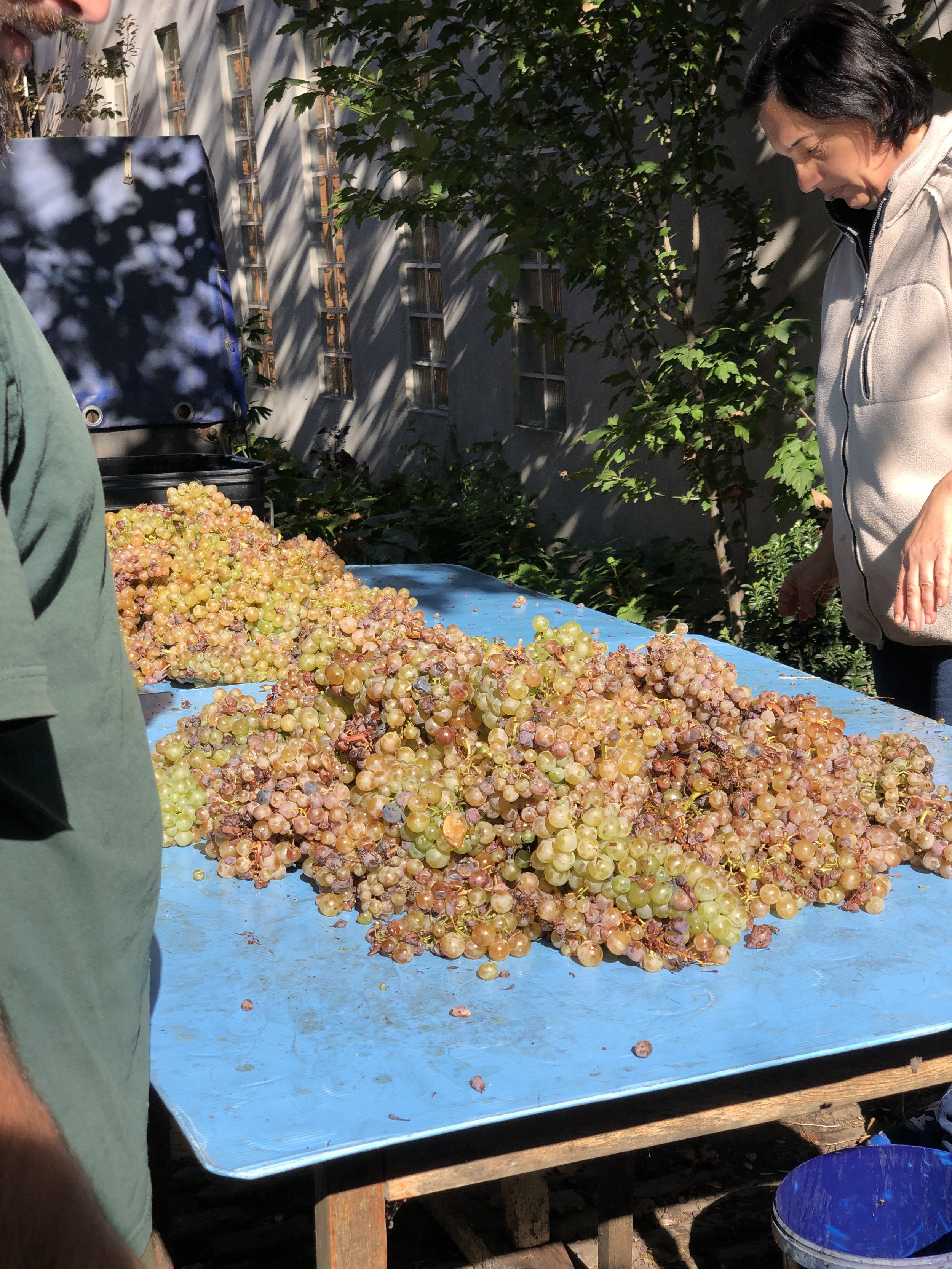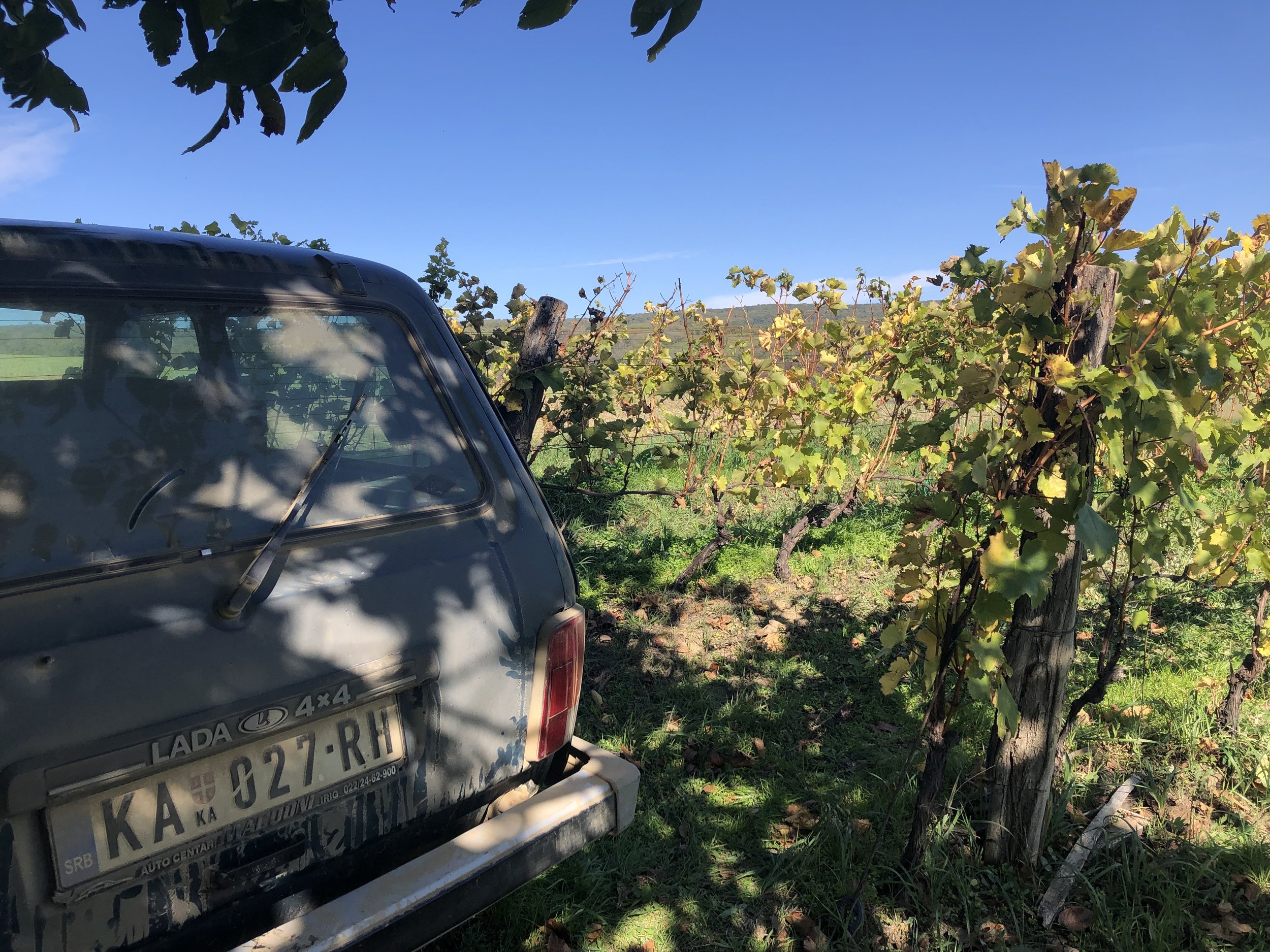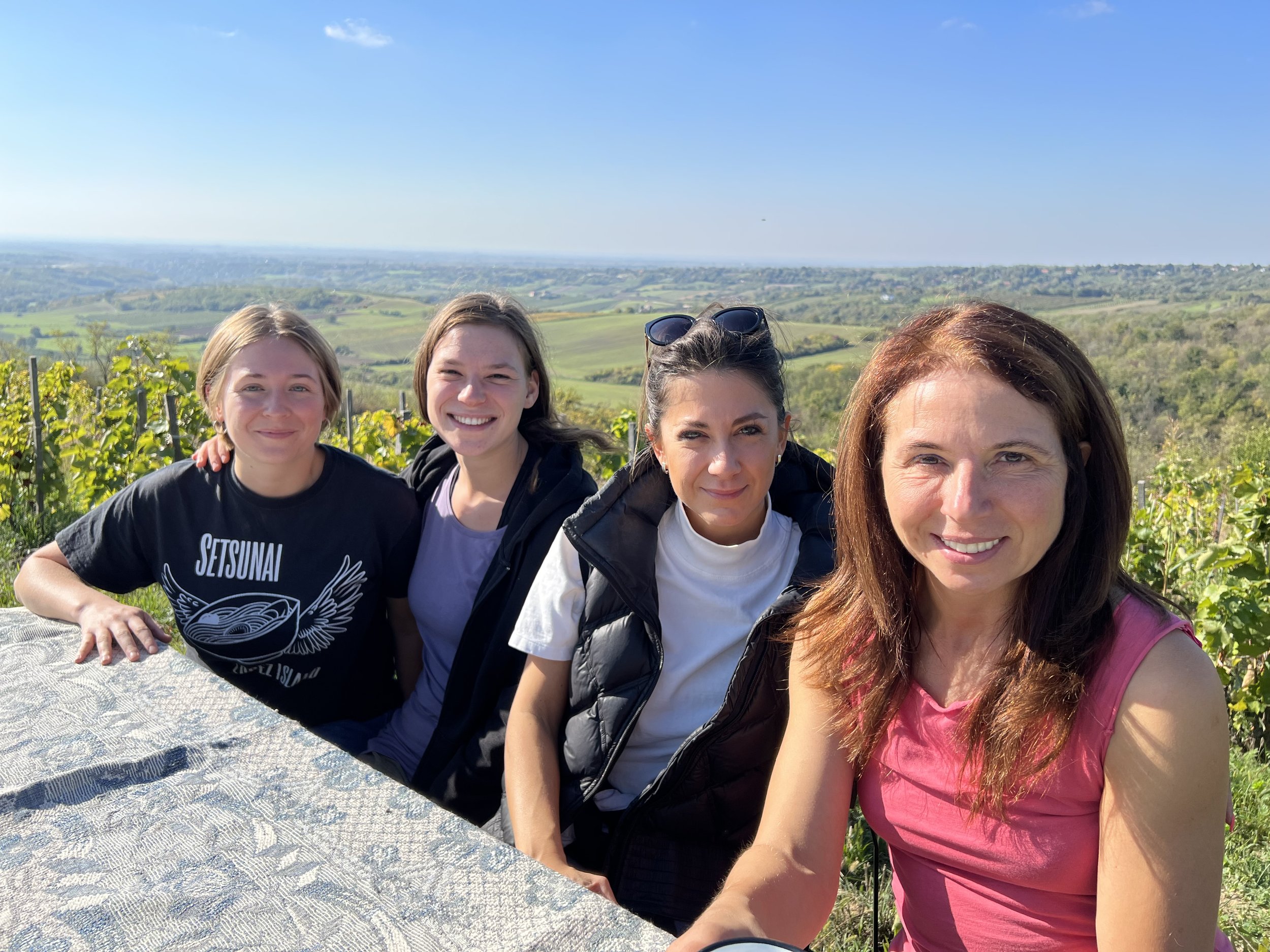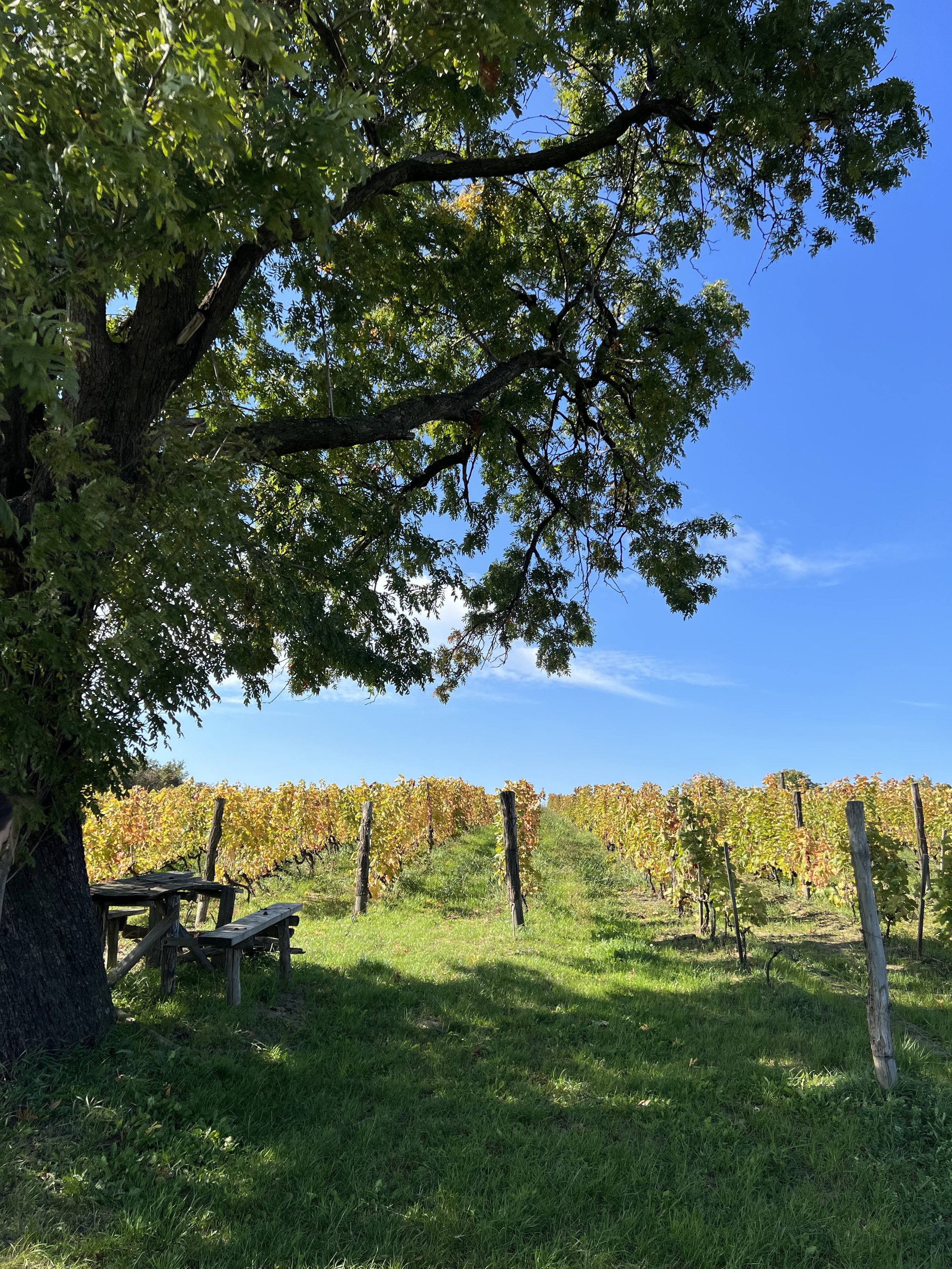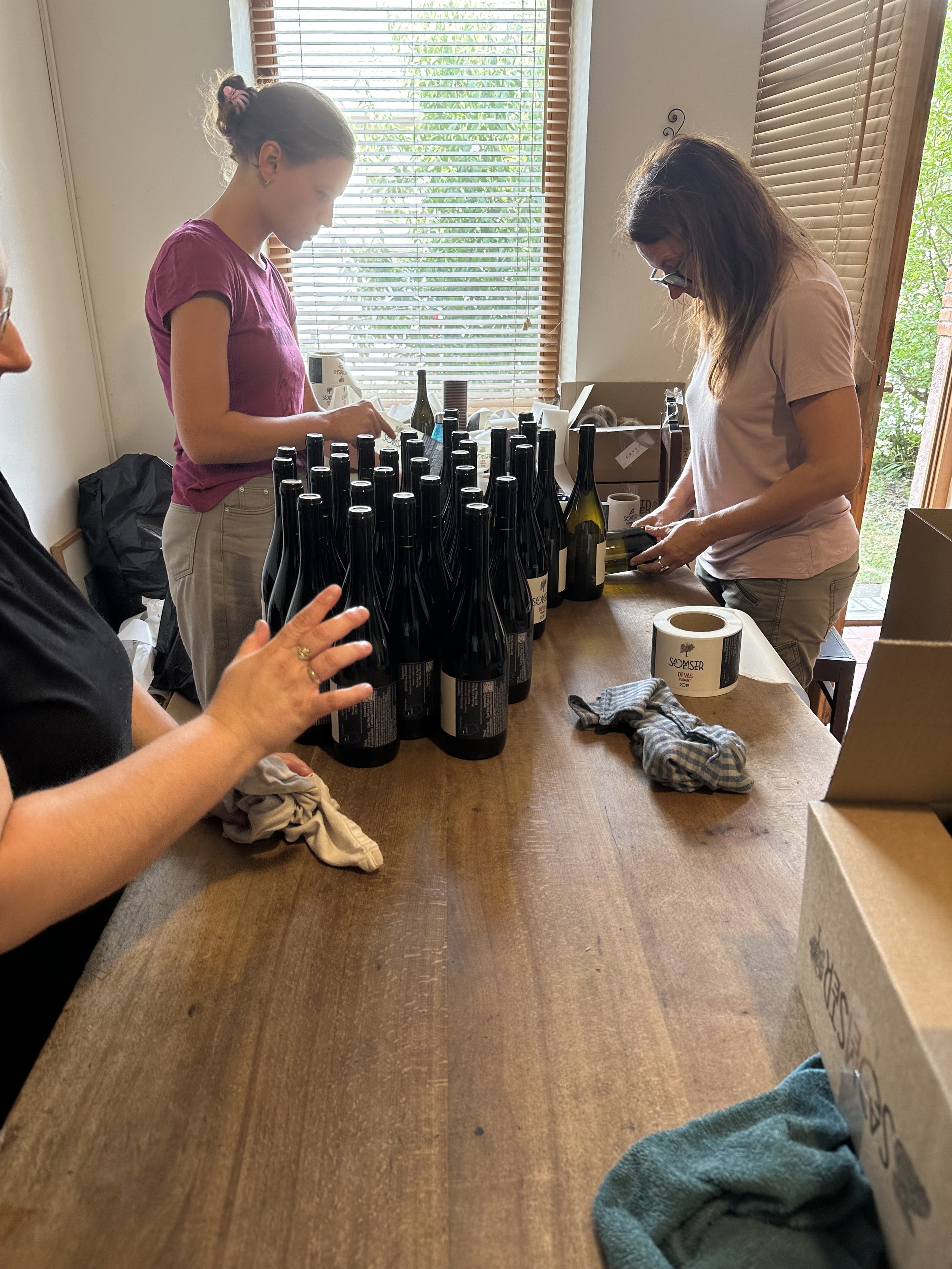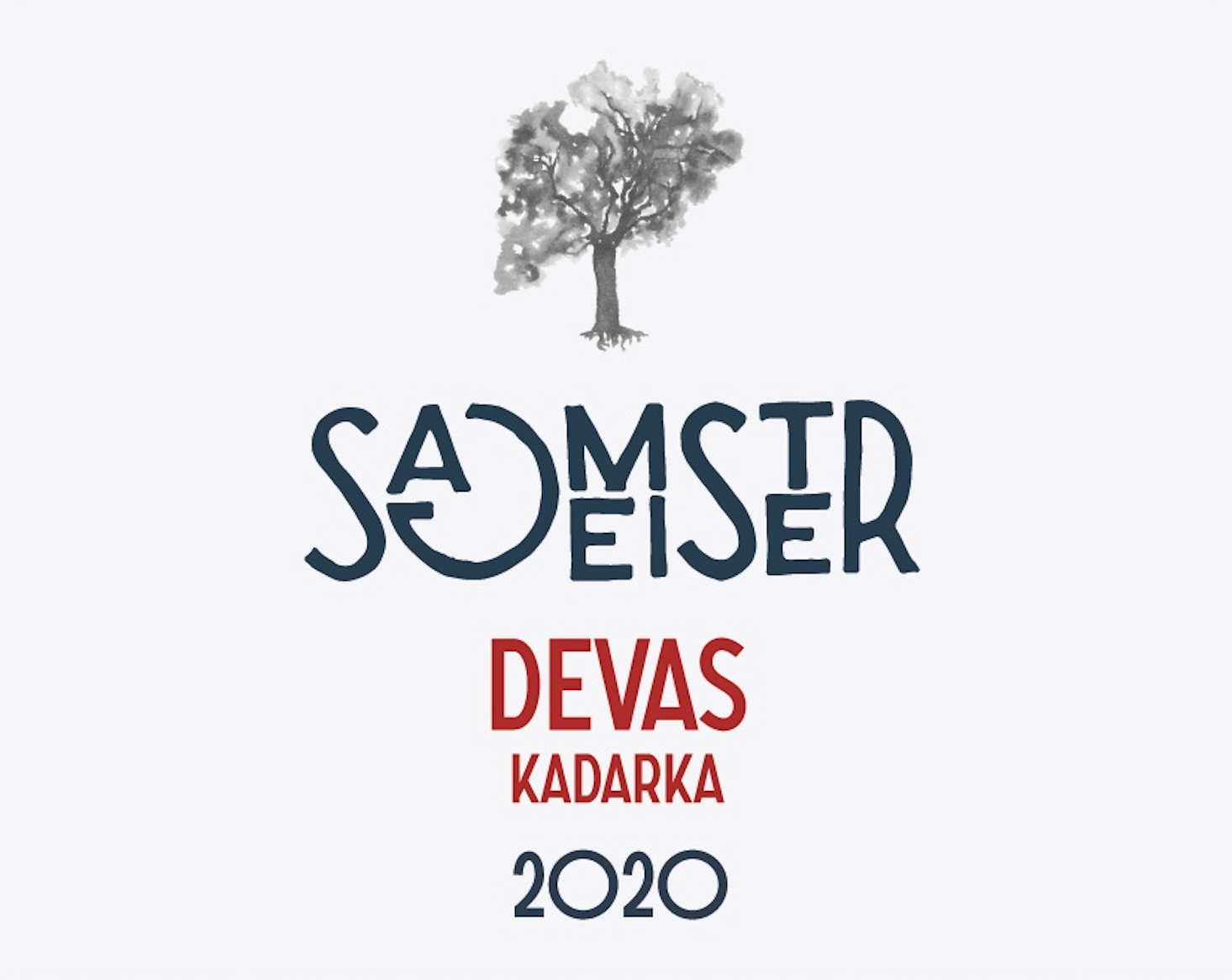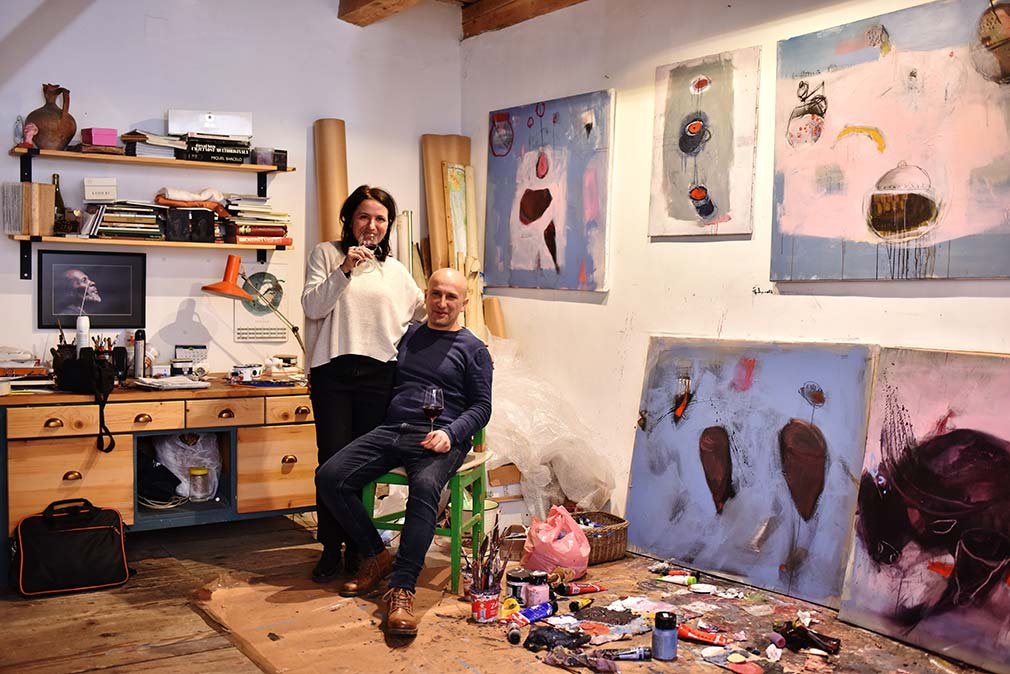
Ernő Sagmeister
Fruška Gora, Serbia
Winemaker: Ernő Sagmeister
Country: Serbia
Region: Fruška Gora (vineyards)
Town/Village: Kanjiža (winery)
Hectares: 7
Farming: Organic practicing, biodynamic practicing
Soil: Limestone, gravel, volcanic rock
Founding Year: 2011
Kanjiža (ka-nee-sha) is a small town just below the Serbian-Hungarian border in the province of Vojvodina. It has been described to me by residents as similar to Twin Peaks— a small town off the beaten path with fascinating, unexpected people. Two of those people being Ernő Sagmeister and his wife Laura. Ernő was raised in Kanjiža; Laura, Subotica, about 40km away. Both are of Hungarian decent, common in this region of Serbia. Both moved to Budapest in the 1990s during the Yugoslav-NATO wars, where they met. Laura is an exceptionally talented painter and abstract artist. Ernő studied civil engineering and later became a mathematics professor. In the early 2000s, inspired by a good friend’s love of wine, as well as his own experience making wine with his grandfather in his youth, Ernő began experimenting with winemaking in his cellar. In 2008, he bought 3 vineyards in Fruška Gora National Park, 150km south of Kanjiža, a famous wine making region in the area which historically supplied large volumes of wine to the Habsburg monarchs of the Austrian-Hungarian Empire.
The region of Vojvodina is known as the bread basket of Serbia (formerly Yugoslavia). The almost completely flat landscape with rich, fertile soil is covered in wheat and sunflower fields. The exception being Fruška Gora National Park, a low mountain range and ancient fault rock that juts out of the flat plain, running East to West.
About 10 million years ago, this whole region was under water, known as the Pannonian Sea. The flat landscape of Vojvodina was the sea floor, and Fruška Gora was an island in the Pannonian sea. This ancient history is one of the aspects that has created the perfect conditions for growing vines. It is geologically very diverse, consisting of shale, marl, limestone, dolomite, sand, cobblestone, and Pannonian clay. The youngest layer of soil is loess. Sporadically high levels of iron provide for a complex acidic structure in the wine. The Danube river runs along the northern side of the mountain range, while the Sava River runs along the southern side, creating a unique microclimate. Fruška Gora National Park is covered with mixed forests (92,3%): silver linden, sessile oak, Austrian oak, beech, common hornbeam. It is the biggest truffle site in Serbia.
Ernő has 3 vineyards, each with distinct soil qualities: volcanic rock, gravel, and limestone. Ernő primarily grows Furmint and Kadarka, two grape varieties native to this region. Ernő brought Furmint and Hárslevelű back to the Fruška Gora after these grape vines were uprooted during the 20th century. He entered Kadarka into the Registry of Recognized Varieties in the Republic of Serbia. Ernő cultivates the vines using organic and biodynamic practices, though is not officially certified. In discussing why, Ernő described himself as an anarchist, not believing in the organic certifying bodies which often employ non-transparent and corrupt practices, no matter the continent. It is clear that Ernő follows these farming principles from a place of deep conviction and personal philosophy, not for sales or marketing. That can also be said for the style of wine, which is a harmony of nature and Ernő’s unique perspective and approach. The label and art on each wine is designed by Laura. I’m honored to present Sagmeister wine in the US.
2019 Devas Furmint
100% Furmint
2020 Devas Kadarka
100% Kadarka
2020 LH Zero
85% Hárslevelű 15% Furmint
